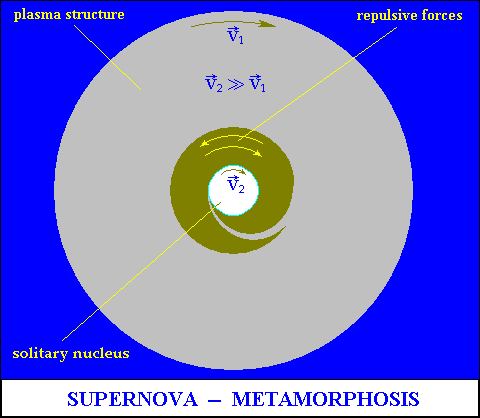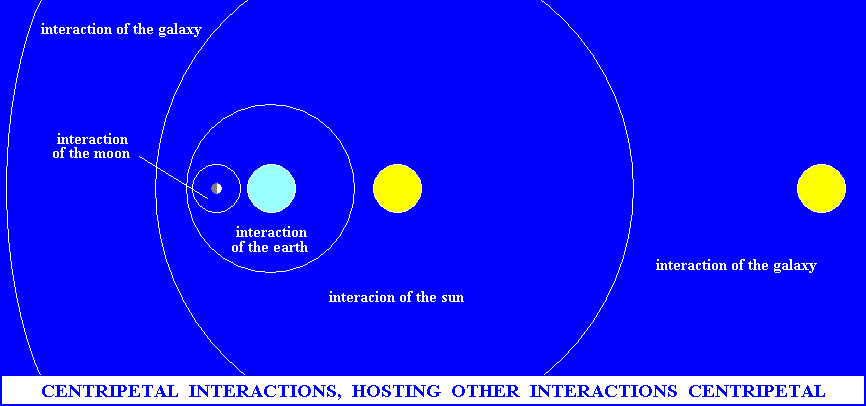The
secret of the stars
Operation of the stars, show fundamental phenomena known.
We find that a star is a sphere accumulation of substance,
with a continuously increasing pressure to the centre and has magnetic
polarities.
We don't know the substance which is initially cumulated, but we assume
that in the sphere of the star,
substance is synthesized out of "nothing", (vacuum) into "something".
We understand that nothing refers to the void space and if space is vectorial,
to vectors.
The interactions of vectors under high pressure conditions may "produce"
hydrogen.
It is important to know the way a start operates, that is, the relationship
between the rotation speed, pressure and magnetic field.
Analysis:
1) The rotation plan of the sphere induces in space, parallel vector currents.
2) The closed circuit currents generate magnetism - electromagnet with
North and South poles.
3) Parallel currents in magnetic field generate centripetal interaction
(gravitation).
4) Centripetal interaction accelerates the substance, rotation speed and
produces pressure.
The rotation speed and centripetal interaction mutually amplify.
It is natural, a closed causal chain, a perpetuum mobile.
And though, anomalies are found in the operation of stars.
Qualities of the centripetal interaction
Centripetal interaction has the capacity to host a row of subordinated
interactions.
For example, the Sun hosts planets, and planets host satellites.
And the Sun plasma can host centripetal interactions, like Jupiter hosts
the red stain.
The fantastic pressure of the Sun separates with time heavy elements,
in a solitary nucleus.
Therefore, Sun has two concentric structures - the nucleus and the huge
plasma cover.
The Sun is a unitary structure. Nucleus seems to additionally have a degree
of freedom,
a precession movement, or even its own centripetal interaction.
This structure may explain the supernova phenomenon and even the migration
of magnetic poles.
Supernova
The nucleus with its own centripetal interaction may divide the stellar
structure.
Limited and compressed by the huge plasma cover, the nucleus operates
like a pressure lifting floor.
Consequences proceed with rapidity:
Nucleus accelerates its rotation speed and compresses.
The plasma cover feeds the nucleus, but "does not keep up" with
the rotation of nucleus.
Rotations in contrary directions, produce forces of rejection,
pressure and the pneumatic decomposition of the plasma cover.
One can also interpret a nucleus "rolling", with the inversion
of poles and rotation,
only if the rotation of the resulting star is inverted.




